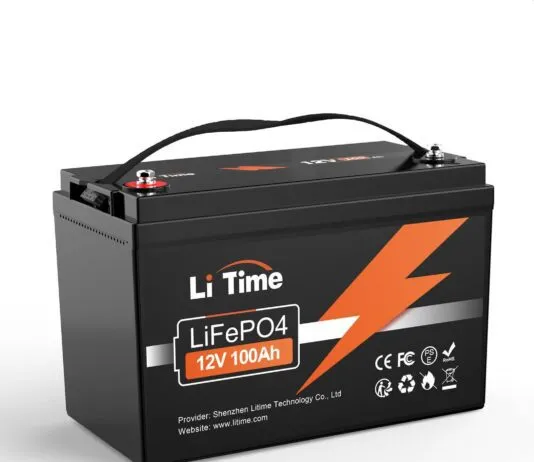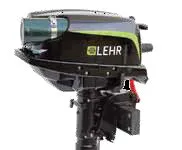Polishing Solar Panels
After years in the sun, even the best quality plastic begins to take on some surface roughness and hazing. The diligent boat owner immediately reaches for his buffer and compound, certain that a shiny panel is a happy panel. In fact, panels are often ruined by attempts to restore the plastic.
Taking the Other Way Home
Our 38-foot catamaran, Josepheline, was built by Lightwave Yachts near Brisbane, Australia. Josepheline draws 3 feet, 6 inches and has a 22-foot beam. It is a fairly conventional design: mini fin keels, two forward queen berths under the bridgedeck, a double berth aft to starboard, and a decent sized shower and head located aft in the port hull. Shes stood the test of time-and distance. Weve cruised about 35,000 nautical miles aboard Josepheline.
Propane-powered Propulsion
Capt. Bernardo Herzer has been converting small engines from conventional fuels to propane since he was a teenager. In 2012, he introduced his first propane outboards, 2.5 horsepower, 5-horsepower, and 9.9-horsepower models. Practical Sailor recently tested the 5-hp Lehr LP 5.0, a water-cooled four-stroke with an electric ignition-no priming or choke required. It operates at 4,000 to 4,500 rpm at wide open throttle, and the 49.6-pound, short-shaft model pushed our 120-pound test boat at 11-12 knots. The engine can be fueled using a 16.4-ounce propane twist-on bottle like those used with camping stoves or a 5-gallon, 20-pound remote propane tank.
Solar-powered Bilge Pumps Bail Out Small Boats
Practical Sailor tested two small solar-powered bilge pumps: the Easy Bailer (500 gallons per hour) and the SeaJoule Solar Bilge Pump (360 gallons per hour). Each self-contained unit has a small re-chargeable 12-volt battery, a fused low-capacity electric pump, and a pump switch, all housed in a plastic box with a 3/4-inch discharge hose and a remote solar panel. Testers evaluated each product’s performance and its components' quality of construction, features, how easily the unit could be maintained, and how well the electrical bits were wired and protected.
S/V Balaena Skipper Andy O’Grady Offers Advice on Extending the Life of Wet-Cell Batteries
S/V Balaena Skipper Andy O’Grady has taken his double-ended cutter rig to every climate between the Southern Ocean and the Artic. O’Grady explains that imperative to onboard power management and extending battery life is keeping batteries charged and avoiding deep discharges. His tips for long-lasting batteries include keeping the discharge above 50 percent, tracking sulfation, and equalizing the battery bank. Equipment O’Grady uses are Trojan 6-volt T105 batteries, Xantrex XAR Smart alternator regulator, 85-amp Bosch alternator, BEP voltage sensing relay, a Solarex 55-watt solar panel, 75-watt Shell solar panel, and a Rutland wind generator.
S/V Balaena Skipper Andy OGrady Offers Advice on Extending the Life of Wet-Cell Batteries
S/V Balaena Skipper Andy O’Grady has taken his double-ended cutter rig to every climate between the Southern Ocean and the Artic. O’Grady explains that imperative to onboard power management and extending battery life is keeping batteries charged and avoiding deep discharges. His tips for long-lasting batteries include keeping the discharge above 50 percent, tracking sulfation, and equalizing the battery bank. Equipment O’Grady uses are Trojan 6-volt T105 batteries, Xantrex XAR Smart alternator regulator, 85-amp Bosch alternator, BEP voltage sensing relay, a Solarex 55-watt solar panel, 75-watt Shell solar panel, and a Rutland wind generator.
Solo Sailor’s Gear Box
First sailed in 1978, the Singlehanded TransPac (SHTP) crosses 2,120 miles of Pacific Ocean from San Francisco Bay, Calif., to Hanalei Bay, Kauai. Practical Sailor contributor and SHTP competitor Skip Allan took time out from his race preparations onboard Wildflower—his Thomas Wylie-designed 27.5-foot sloop/cutter—to open his notes on solo sailing. Last month, the veteran offshore racer and singlehanded cruiser discussed his gear, sail inventory, storm tactics, and his approach to provisioning. This month, Allan focuses on the electronics, safety gear, and routing tactics he employs when racing alone. Allan’s onboard systems include two deep-cycle wet-cell batteries that total 165 amp hours, two solar panels, and a 35-amp alternator on Wildflower’s10-horsepower Yanmar single-cylinder diesel. He has a fixed and handheld VHF, an Icom SSB radio, a Pactor modem for weather charts and weather faxes, and Winlink email. Other electronics include handheld GPS, LED lighting, and a small portable radio.
Solo Sailors Gear Box
First sailed in 1978, the Singlehanded TransPac (SHTP) crosses 2,120 miles of Pacific Ocean from San Francisco Bay, Calif., to Hanalei Bay, Kauai. Practical Sailor contributor and SHTP competitor Skip Allan took time out from his race preparations onboard Wildflower—his Thomas Wylie-designed 27.5-foot sloop/cutter—to open his notes on solo sailing. Last month, the veteran offshore racer and singlehanded cruiser discussed his gear, sail inventory, storm tactics, and his approach to provisioning. This month, Allan focuses on the electronics, safety gear, and routing tactics he employs when racing alone. Allan’s onboard systems include two deep-cycle wet-cell batteries that total 165 amp hours, two solar panels, and a 35-amp alternator on Wildflower’s10-horsepower Yanmar single-cylinder diesel. He has a fixed and handheld VHF, an Icom SSB radio, a Pactor modem for weather charts and weather faxes, and Winlink email. Other electronics include handheld GPS, LED lighting, and a small portable radio.














































